
The video girl, video model, or “video vixen” became the blueprint of ’90s and ’00s fashion and beauty trends. Fuller bodies, hourglass shapes, razor-thin brows, frosted shadow, and glossy lips defined their look. They were the girls who rappers rapped about and R&B singers danced in the rain for. One of the most recognizable faces is Melyssa Ford.
Introduced to the world of video modeling by Director X while bartending in her native Toronto, Ford quickly became an in-demand video model. She made memorable appearances in music videos from Usher, Jay-Z, Alicia Keys, Sisqo, and more. Decked out in almost as much designer and furs as the musicians in the videos, she recalls being introduced to the world of fashion by stylist June Ambrose. “She was like everybody’s fairy godmother,” Ford says. “On a big-budget music video, I couldn’t believe all the clothes, jewelry, and shoes that were laid out.”
The era of vixens and the term didn’t come without criticism. They were sometimes seen as too sexy or a bad representation of women. “The connotation has been positive and it’s been negative; I’m not sure what its current standing is other than being the only reference point,” says Ford. “I prefer that over ‘video ho,’ that’s for sure, because that got thrown around for many years.” She prefers the term video vixen and defines it as “a really incredibly sexy, powerful, confident woman who helped usher in the second golden age of hip-hop.”
Now Ford dedicates her time to podcasting and teaching Pilates, so in honor of Hip-Hip 50, we caught up with her to discuss some of her favorite career moments and the era’s impact.
Photo: QTIP/Youtube
What were your earliest memories of seeing video vixens?
Leila Arcieri in “Vivrant Thing.” I can’t think of one girl who didn’t want to be her in that video. She was so stunningly beautiful and effortlessly cool and cute and pretty. She’s standing next to Q-Tip, and the song is amazing. It was the perfect amalgamation of the things you want to be as a girl.
Video girls have had such a huge impact on the aesthetics of the ’90s and ’00s and really defined the era. Is there anywhere you see your impact now?
I see our impact in the standard of beauty and how it was completely altered. Before video models, as far as I’m concerned, the standard of beauty was very Eurocentric, and video girls of the late ’90s and the 2000s were the first real, consistent representation on TV for a lot of Black and brown girls to see themselves and to see themselves in their truest form — their physical beauty, their voluptuous bodies. You see the effects today; it’s everywhere you turn. The plastic-surgery boom has to thank for that. I don’t think you get like a JLo or a Kim Kardashian without us. It was a shift in the standard of beauty that never shifted back.
When you showed up on set, how much creative control were you allowed?
I had control over what I wasn’t going to wear. I was known as the “Queen of No.” The more in demand I became, the more I used my voice to exercise boundaries, in terms of what I felt comfortable wearing. I wanted to look beautiful and sexy, but I also had insecurities that I didn’t want anybody to know that I had. Also, I didn’t want to be gratuitously naked or scantily clad. There were things I would completely say “no” to.
I was the lead in the “Thong Song” remix video with Sisqo and Foxy Brown. They held up a string bikini for me to wear and said here’s a thong, put it on. I said that’s not gonna fly; there’s no way in hell I’m getting on a motorcycle in a thong with my ass out. No. I said I’m putting on those leather pants and we can have the thong hiked up on my hips; you will see the top of my glutes, but the bottom half of my body is going to be covered because that is just too much. I exercised boundaries that way. I wasn’t into gratuitous nudity or implied nudity just for the sake of doing it.
Photo: Youtube
A thong peeking out of your pants was very on trend for the time.
I thought that was enough. You can watch porn if you want to get the whole enchilada; this was a music video. I always exercise boundaries and let production know you’ll get the finished product that you’re looking for without me compromising myself.
How much were they even allowed on TV?
They just figured let’s shoot the craziest shit and deal with the censors later. It was very much an asking-for-forgiveness-rather-than-permission kind of attitude back then.
What were the hair and makeup teams like?
They were really good. Thankfully, those budgets were so large and we had so many Black and brown people and staff who understood the need to hire Black and brown glam squads. That was so imperative, not just for the sake of Black and brown people knowing how to do makeup and hair of Black and brown girls, but also from an employment standpoint. It’s an opportunity for Black and brown people to break into the business that way, providing them with jobs and unionized work. We always looked so good.
Photo: Youtube
Right, and people are still re-creating these looks. I also think it’s interesting because you hear often that there will be people on set who are not equipped to work with some hair or skin tones.
There are experiences that happen on set where you learn the hard way. In one of my first experiences with music videos, I went there with my real hair, and I didn’t have any extensions because I didn’t know any better. They were tugging on my hair and they’re styling it with hot tools, and I look at the floor and half my hair is on the ground.
When they’re rushing to get you ready, there is no care about how I leave and the state of my hair or my skin or me after the product has been shot. That taught me to come prepared and have my hair done prior just in case they haven’t hired somebody who is going to be able to work with my hair.
Were there any designers or brands you really loved wearing?
One of my first fashion experiences was working with June Ambrose for 112’s “Anywhere” video. She put me in a Dolce & Gabbana lace leotard and Tom Ford heels. I felt like Sophia Loren in that outfit. I put it on, looked at myself in the mirror, and was like holy cow. In that moment, I got what the appeal was about me, my body, and my beauty. That was one of the first outfits and designers that I was really blown away by, by how it enhanced the voluptuous female figure.
You mentioned Usher’s “Yeah” as one of your favorite videos. Did you have a favorite look from that video?
Tameka Foster was the stylist on “Yeah,” who ended up becoming Usher’s wife. I’m so glad she liked me and she put me in that dress. It was a silver chain-mail dress with a drop at the front, and it was completely backless. It was such a dangerous dress. It was so gorgeous. I remember seeing it hanging in the wardrobe trailer and thinking please let that be the dress that I’m wearing.
It made the experience that much more incredible, especially since I wasn’t even supposed to be in the video. I just walked on the set to say hi to everybody, and then Usher said he wanted me as the lead girl in the video. That was how it happened. That dress was phenomenal. I do not know who made it, but knowing Tameka Foster, it was somebody expensive.
The video girl doesn’t really exist anymore; do you have any theories as to why that is?
It’s kind of a lost art form. So much about the music business has changed from when I was doing videos until now. I don’t think there’s a need for music videos. You can create one on your phone, go on Apple Music, and put it on Reels. The concept of music videos and the anticipation we used to have to see the visual products that came along with our favorite songs — that’s an era that’s gone by.
How Video Vixens Changed the Beauty Standard

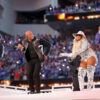
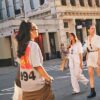
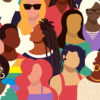




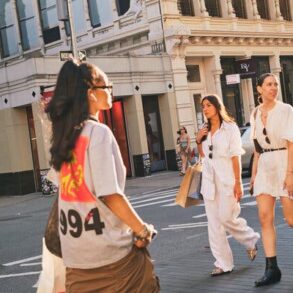
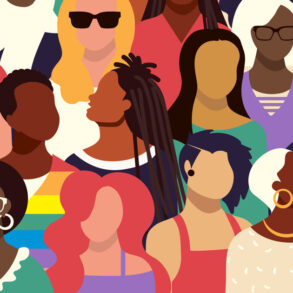

Leave a Comment